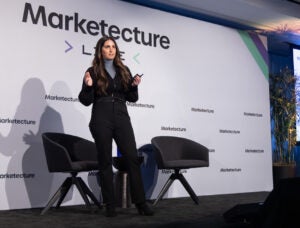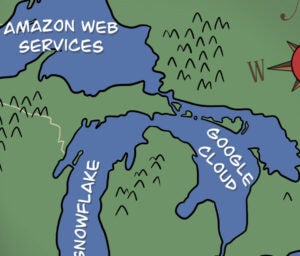 Facebook made waves two weeks ago when it delisted more than 15 companies from its Facebook Exchange (AdExchanger story). Going forward, only 12 companies will be allowed to trumpet their access to the desktop news feed and right rail ad space that comprises the FBX inventory pool.
Facebook made waves two weeks ago when it delisted more than 15 companies from its Facebook Exchange (AdExchanger story). Going forward, only 12 companies will be allowed to trumpet their access to the desktop news feed and right rail ad space that comprises the FBX inventory pool.
But that doesn’t tell the whole story.
Even as it culled many third parties, including some very big ad tech companies like Rocket Fuel, from its laminated menu of preferred FBX partners, Facebook preserved back-channel access for more than 10 intermediaries that at first appeared to have been dropped from the program. These players can continue to bid on Facebook’s FBX inventory, consisting of desktop ads in the news feed and right rail. But they are not authorized to tell customers and prospects about it.
So who are these shadow partners? AdExchanger has confirmed that while they do not hold the FBX “badge,” Adform, Adobe, DataXu, Conversant (owned by Epsilon), MyThings, PerfectAudience (owned by Marin), Struq (owned by Quantcast), and The Trade Desk are all among the companies still active on FBX.
Facebook’s motives for creating a second tier of FBX partners are a little murky. One factor is certainly spend.
According to several sources, Facebook has asked partners across the board to commit to higher spend levels before it grants certification – and the marketing benefits that come with having a formal strategic alliance with Facebook. Oddly enough, some of these partners weren’t told just how much spend Facebook would require before granting a badge – only that it had to be higher. As one unofficial FBX partner speculated, withholding certification while still allowing access is one way to maintain existing revenues while incentivizing partners to sell more FBX media.
“Some folks are spending less on FBX than Facebook would like to see, but still spending at a good clip,” said the source. “There’s no need to boot them out 100%, but you can still dangle out the official badge to encourage them to bring more spend on.”
This person continued, “We’re bidding and winning on FBX. We just no longer have the badge.”
Another factor in play is Facebook’s desire to go direct to buyers through its Custom Audiences program, which lets ad buyers match first- and third-party data to the Facebook audience without going through an intermediary. Many partners believe Facebook eventually intends to replace FBX entirely with its own self-serve interface and APIs, but they disagree about how long it will take to get there.
Facebook today lacks the in-house technology and knowledge to support some advanced retargeting methods in verticals like retail and travel, so it relies on intermediaries like Criteo, Triggit and TellApart to serve those clients. Going forward, Facebook wants FBX to be known for these more complex use cases, and it wants everyone else to do retargeting through its APIs.
It may be that FBX is preserving back-channel FBX access for some alternative use cases, such as dynamic creative optimization, that it cannot yet support through its API.
It also bears mentioning that the existence of a second tier of access is not unique to FBX. In Facebook’s API business there are partners who have access to the API but aren’t given the “marketing partner” designation – so this isn’t just an FBX thing. For instance, dozens of partners have standard or basic access to Facebook’s ads API and are working toward a specialty but haven’t gotten it yet.












